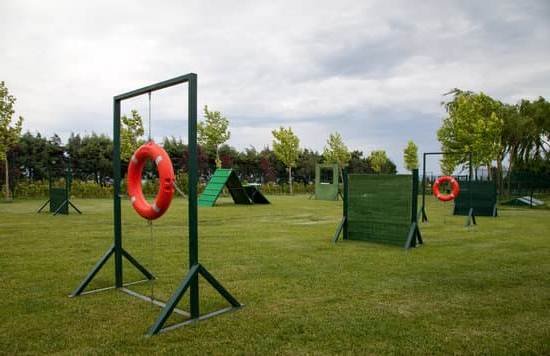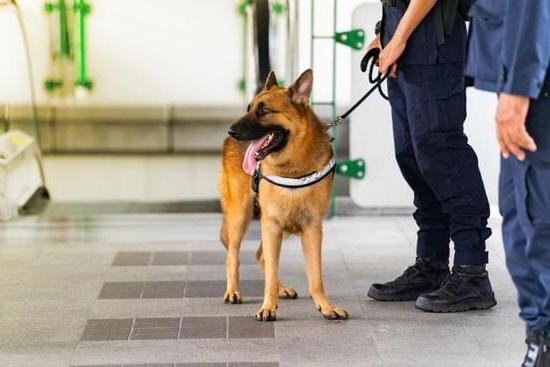Is it ok to not crate train your dog? This question has sparked a heated debate among dog owners and trainers alike. While some argue that crate training is essential for a well-behaved and balanced dog, others believe that it can be unnecessary or even harmful. In this article, we will delve into the controversy surrounding crate training and explore both sides of the argument.
Crate training has long been considered a standard practice in dog training, with many experts claiming its benefits in terms of housebreaking, preventing destructive behavior, and providing a safe haven for dogs. However, opponents of crate training argue that confining a dog to a small space for extended periods can lead to anxiety, behavioral issues, and hinder natural instincts.
In the following sections of this article, we will examine the concerns raised against crate training and explore alternative methods that can be used to train and provide a safe environment for your furry friend. We will also weigh the pros and cons of crate training, considering its effects on a dog’s behavior and development. Additionally, we will address common misconceptions surrounding crate training and provide tips for successful non-crate training.
Whether you are considering not crate training your dog or simply seeking more information on this controversial topic, this article aims to equip you with the knowledge needed to make an informed decision based on your unique dog’s needs and lifestyle. So let us dive into the world of crate training controversy and explore the alternatives available to create a happy and well-adjusted canine companion.
The Argument Against Crate Training
Crate training has become a popular method for dog owners to provide their furry friends with a safe and secure space. However, there is a growing discussion surrounding the potential negative impacts of crate training on dogs. This section will delve into the concerns associated with crate training and shed light on alternative methods.
One of the main concerns raised by opponents of crate training is the restriction it places on a dog’s movement. Critics argue that confining a dog to a small space for extended periods can lead to physical discomfort and restrict natural behaviors such as stretching, exploring, and interacting with their environment. Additionally, opponents worry that long hours spent in crates may contribute to anxiety, fearfulness, or even aggression in some dogs.
For those who oppose crate training, alternative methods offer different approaches and techniques for ensuring a well-behaved and safe dog without the need for confinement in a crate. Options such as tether training, where a dog is attached to a fixed point by a leash within controlled areas of the house, allow them more freedom while still maintaining supervision.
Another alternative is using playpens or baby gates to create designated areas within the home where dogs can be kept safely when unsupervised.
Alternative Training Methods
When it comes to training your dog, crate training is not the only option available. Many dog owners opt for alternative training methods that provide a more flexible and comfortable approach for both the dog and the owner. These alternative methods focus on positive reinforcement, building trust and communication, and creating a harmonious bond between the dog and their owner.
One popular alternative method is reward-based training. This method involves rewarding desired behaviors with treats, toys, or praise. By focusing on positive reinforcement, dogs learn to associate good behavior with positive outcomes, encouraging them to repeat those behaviors in the future. Reward-based training not only helps dogs learn new commands and behaviors but also strengthens the bond between them and their owners.
Another effective alternative training method is clicker training. Clicker training relies on using a clicker device to signal desired behaviors at the exact moment they occur, followed by a reward. The clicker sound serves as a marker for the correct behavior, helping dogs quickly understand what they are being rewarded for. This method allows for precise timing and clear communication between the dog and their owner.
| Training Method | Description |
|---|---|
| Reward-Based Training | Aims to reinforce desired behaviors through positive rewards such as treats, toys, or praise. |
| Clicker Training | Involves using a clicker device as a marker for desired behaviors at the exact moment they occur. |
Positive reinforcement techniques like these offer a humane and effective approach to training that can be used in various circumstances without relying on crating. They allow dogs to learn at their own pace while feeling safe and secure in their environment. It’s important to choose a training method that aligns with your dog’s personality, learning style, and specific needs.
In addition to reward-based and clicker training, other alternative methods include leash training, obedience classes, and positive association techniques. Some dog owners may even opt for hiring professional trainers who specialize in force-free training methods. Ultimately, the key is to choose a training method that suits both you and your dog’s lifestyle and preferences, while also promoting positive behavior and a strong bond between you.
Weighing the Pros and Cons
The Benefits of Crate Training
Crate training has long been touted as an effective method for managing a dog’s behavior and promoting their development. Proponents of crate training argue that it provides a den-like space where dogs can feel safe and secure, mimicking the natural instincts of their ancestors. Additionally, crate training can aid in housebreaking by teaching dogs to hold their bladder and bowels until they are released from the crate.
One major advantage of crate training is that it can help prevent destructive behaviors when left unsupervised. Dogs often chew on furniture or household items out of boredom or anxiety, but a properly trained dog will see their crate as a place of comfort and security. Crate training can also assist with separation anxiety, as the confined space can create a sense of familiarity and reduce stress levels.
The Drawbacks of Crate Training
While crate training may have its benefits, there are also concerns about the potential negative effects on a dog’s behavior and development. Opponents argue that extended periods in a crate may cause psychological distress or lead to physical problems, such as joint issues or muscle atrophy. Additionally, if not done correctly, crate training can backfire and cause the dog to associate the crate with punishment or confinement.
Another drawback is that some dogs simply do not take well to being crated. Every dog is unique with individual needs and preferences, so it’s important to consider whether your dog would thrive in a crate environment. Forcing a dog into crate training against their will may lead to increased stress levels and undesirable behaviors.
Finding a Balance: Considering Your Dog’s Needs
When weighing the pros and cons of crate training, it’s crucial to take into account your dog’s specific personality, age, breed, and overall wellness. Some dogs naturally seek out small enclosed spaces for comfort and safety while others may feel anxious or claustrophobic. Likewise, puppies may benefit from shorter crate training sessions to prevent accidents, while older dogs may already have established good behaviors and not require a crate.
Ultimately, the decision of whether or not to crate train your dog should be based on what is best for their individual needs and well-being. It’s important to consult with a professional dog trainer or veterinarian who can provide guidance and support in determining the most suitable training approach for your furry companion.
Understanding the Natural Instincts of Dogs
The Pack Mentality: How Dogs’ Instincts Influence Crate Training
One of the key factors to consider when deciding whether or not to crate train your dog is understanding their natural instincts. Dogs are descendants of wolves, and they share many similar traits. One such trait is their pack mentality. Wolves in the wild live in packs and have dens where they feel safe and secure. These dens provide them with a sense of belonging, protection, and territory.
Crate training can tap into this natural instinct of dogs by providing them with a den-like space that promotes feelings of security and comfort. When introduced properly, a crate can become a safe haven for dogs and serve as their personal space where they can retreat to relax, sleep, or simply observe their surroundings.
However, it’s important to note that not all dogs will naturally gravitate towards crate training. Some may find it too confining or restrictive, causing distress or anxiety. Every dog is unique, and understanding their individual needs and preferences is crucial when considering crate training as an option.
The Den Alternatives: Exploring Other Options
While crate training aligns with the natural instincts of some dogs, others may fare better without being confined to a crate. There are alternative options available that still cater to their natural instincts but provide more freedom and flexibility.
One popular alternative is using baby gates or playpens to create a designated area in your home where your dog has enough space to move around comfortably while still feeling secure. This allows them to have more freedom while you are away without the confinement of a crate.
Another alternative is using positive reinforcement techniques combined with proper house training methods. By teaching your dog appropriate behaviors through rewards and consistent guidance, you can gradually give them more freedom throughout your home as they demonstrate responsibility.
Considerations for Individual Dogs
When deciding whether or not to use crate training, it’s important to take your dog’s personality, age, and specific needs into account. For example, a young puppy who is still in the process of being housetrained may benefit from crate training in order to establish a routine and prevent accidents when unsupervised. On the other hand, an older dog who is well-behaved and trustworthy may not require a crate at all.
Ultimately, the decision to crate train or not should be based on your understanding of your dog’s natural instincts and their individual circumstances. It’s important to remember that every dog is different, so what works for one may not work for another. Consulting with a professional dog trainer or behaviorist can also provide valuable insight into determining the best approach for your furry friend.
The Importance of Providing a Safe Environment
When considering whether or not to crate train your dog, it is important to understand the alternative methods available for providing a safe environment and creating a dog-friendly space without the use of a crate. While crate training can be effective for some dogs, it may not be suitable for all dogs or their owners. Finding alternative training methods that align with your dog’s needs and lifestyle is crucial for their well-being and development.
One alternative option to crate training is the use of playpens or gated areas. These can provide a designated space where your dog can safely roam and play without being confined to a crate. Playpens can be especially useful for puppies who are still in the process of being housetrained, as they allow them more freedom while minimizing the risk of accidents or destructive behavior.
Another method to create a dog-friendly environment without crates is through positive reinforcement training and proper management. This involves teaching your dog appropriate behaviors and setting clear boundaries within your home. By rewarding good behavior and redirecting unwanted behaviors, you can create a harmonious living space where your dog feels safe and secure.
It is also essential to ensure that your home is free from potential hazards that could harm your dog if left unsupervised. This includes securing loose wires, removing toxic plants or substances, and storing valuable items out of reach. Providing plenty of toys, interactive games, and mental stimulation can also prevent destructive behavior by keeping your dog engaged and entertained.
When creating a dog-friendly space without using crates, it is important to consider the individual needs and temperament of your dog. Some dogs may thrive in an open environment with minimal restrictions, while others may benefit from having specific areas or boundaries within the home. Taking into account factors such as age, breed, energy level, and any specific behavioral issues will help you tailor the environment to best suit your dog’s needs.
Case Studies
One way to better understand the effects of not crate training a dog is by examining real-life experiences of dog owners who have made this choice. These case studies provide valuable insights into the outcomes and challenges that can arise from not using a crate as part of a dog’s training.
- Case Study 1: Free Roaming and Independence
- Case Study 2: Utilizing Indoor Barriers
- Case Study 3: Slow Transition from Crate to Freedom
In this case study, a dog owner decided not to crate train their dog from the beginning. Instead, they allowed the dog to have free rein in the house. They provided plenty of toys, designated areas for sleeping and eating, and ensured regular exercise and mental stimulation.
The outcome was a highly independent dog who thrived within this setup. The dog quickly learned boundaries, such as not jumping on furniture or entering certain areas of the house. Additionally, the owner reported that there were no issues with destructive behavior or separation anxiety when left alone.
Another approach taken by some dog owners who opt against crate training is using indoor barriers to create safe zones within their home. In this case study, an owner incorporated baby gates and exercise pens to confine their uncrated puppy in specific areas while still allowing them freedom of movement.
Through diligent training and supervision, this strategy resulted in positive outcomes for both the dog and owner. The puppy quickly learned which areas were off-limits and demonstrated improved impulse control over time. Furthermore, this approach allowed for gradual expansion of the designated space as the puppy grew older and more trustworthy.
For some dog owners who choose not to crate train initially but later decide to transition away from crate use, a gradual approach can be successful. In this case study, an owner started crate training their dog but gradually introduced more freedom as the dog demonstrated good behavior and reliability.
By implementing a gradual process, the dog developed trust in their surroundings and built confidence in being left alone without a crate. The owner reported that the transition went smoothly, with no negative effects on behavior or separation anxiety observed.
These case studies illustrate that not crate training a dog can indeed be successful if approached thoughtfully and diligently. However, it’s important to note that individual experiences may vary, and what works for one dog may not work for another. Dog owners should carefully consider their specific circumstances, their dog’s temperament, and consult with professionals or experienced trainers to determine the best course of action.
Tips for Successful Non-Crate Training
Dog owners who choose not to crate train their dogs can still have a successful training experience by following a few essential guidelines. While crate training is a popular method, it is not the only way to train dogs effectively. Here are some tips for successfully non-crate training your dog.
Firstly, establishing a consistent routine is crucial when it comes to non-crate training. Dogs thrive on routine and structure, so it’s important to set clear boundaries and expectations from the beginning. Create a daily schedule that includes designated times for feeding, walking, playtime, and bathroom breaks. Consistency will help your dog understand what is expected of them and make the training process smoother.
Another tip for successful non-crate training is to provide plenty of exercise and mental stimulation for your dog. Dogs need both physical and mental stimulation to stay happy and well-behaved. Regular exercise helps expend their energy, reducing behavioral problems such as excessive barking or chewing. Engaging in interactive play sessions, puzzle toys, or even obedience training can provide the mental stimulation necessary to keep your dog engaged and focused.
Positive reinforcement is also key when non-crate training your dog. Instead of using punishment or negative techniques, focus on rewarding good behavior with treats, praise, or playtime. Positive reinforcement encourages desired behaviors and helps reinforce the bond between you and your furry friend. Remember to be patient and consistent in rewarding behavior you want to encourage.
Addressing Common Misconceptions
Crate training is a popular method of dog training that involves using a crate as a safe and secure space for the dog. However, there are many misconceptions surrounding this training method. In this section, we will address some of the common myths and debunk them to provide you with accurate information about crate training.
One common misconception is that crate training is cruel and inhumane. Critics argue that confining dogs to a small space goes against their natural instincts and can lead to anxiety and stress. However, when done correctly, crate training can actually provide dogs with a sense of security and comfort.
The key is to introduce the crate gradually and make it a positive experience for the dog. By providing them with a cozy space of their own, dogs can feel safe and relaxed.
Another myth is that crate training is only suitable for certain breeds or sizes of dogs. In reality, crate training can be beneficial for dogs of all breeds and sizes. Whether you have a small Chihuahua or a large Labrador Retriever, crate training can help teach them proper behavior, aid in potty training, prevent destructive behavior when left alone, and provide a safe haven during stressful situations such as thunderstorms or fireworks.
Some people believe that crating your dog for extended periods of time is necessary for effective training. This is not true. While crates can be useful tools in certain situations like house-training or preventing destructive behavior when unsupervised, it’s important not to rely on the crate as a long-term confinement solution. Dogs need regular exercise, mental stimulation, and social interaction to thrive. Using the crate as part of an overall balanced approach to training is key.
By debunking these myths surrounding crate training, it becomes clear that this method can be beneficial when used correctly and responsibly. It’s important for dog owners to educate themselves on proper crate training techniques and seek guidance from professional trainers if needed. Crate training should always be done with kindness, patience, and respect for the individual needs of each dog.
Conclusion
In conclusion, the decision to crate train or not crate train your dog is ultimately one that should be made based on your individual dog’s needs and lifestyle. While crate training may have its benefits in terms of providing a safe and secure space for your furry friend, it is important to consider the concerns and alternatives before making a final decision.
Understanding the natural instincts of dogs is crucial when considering crate training. Some argue that confining dogs in crates goes against their instinctual need for freedom and movement. However, others argue that crates can mimic den-like environments, aligning with a dog’s natural instincts for shelter and security.
Providing a safe environment for your dog should be a top priority, regardless of whether or not you choose to use a crate. It is essential to create a dog-friendly space in your home that allows your pet to feel comfortable and secure. This can involve setting up designated areas with bedding, toys, and access to food and water.
Examining the experiences of dog owners who have opted out of crate training through case studies can provide valuable insights. By observing how these dogs behave and develop without being crated, you can gain further understanding of the potential benefits and drawbacks of this training method.
Ultimately, successful non-crate training involves setting clear boundaries and guidelines for your dog. Establishing a routine, rewarding positive behavior, and providing mental and physical stimulation are all essential components of effective non-crate training.
It is important to address common misconceptions surrounding crate training as well. Many people believe that crates are cruel or only used as punishment, but when used properly, they can actually provide comfort and security for dogs in various situations.
Frequently Asked Questions
Can you have a good dog without crate training?
Yes, it is possible to have a good dog without crate training. While crate training can be a useful tool in dog training and behavior management, it is not the only method available.
There are alternative approaches that focus on positive reinforcement and consistency to shape desirable behaviors in dogs. These methods involve setting clear boundaries, using rewards and praise for good behavior, and providing a safe and comfortable environment for the dog to rest or relax.
What can I do instead of crate training?
Instead of crate training, there are several options available for dog owners. One alternative is to create a designated area in your home where the dog can have their own space. This could be a playpen or a specific room with comfortable bedding, toys, and access to water and food.
The goal is to provide a secure and calming environment where the dog can feel relaxed when unsupervised. Additionally, using positive reinforcement techniques such as reward-based training, teaching commands like “stay” or “place,” and gradually increasing the time spent alone can help promote good behavior without relying solely on crate training.
Is it ever too late to crate train a dog?
It is never too late to crate train a dog entirely if introduced properly with patience and positive reinforcement techniques. Crate training can benefit dogs of all ages by providing them with a safe space they can call their own while also assisting in housebreaking efforts or keeping them out of mischief when necessary. However, it may require more time and effort when working with an older dog due to potential previous negative experiences or ingrained habits.
Patience, consistency, and understanding the individual needs of the specific dog will be crucial in successfully crate training an older dog who hasn’t been exposed to it before. Gradually introducing them to the crate using positive associations like treats or favorite toys can help build their trust and acceptance over time.

Welcome to the blog! I am a professional dog trainer and have been working with dogs for many years. In this blog, I will be discussing various topics related to dog training, including tips, tricks, and advice. I hope you find this information helpful and informative. Thanks for reading!





